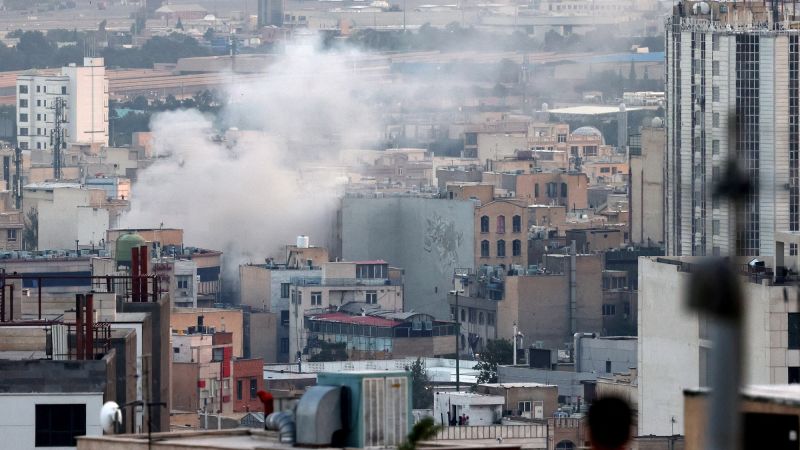The ongoing Israel-Iran crisis has escalated, leading to significant international concern. As articulated by Brett McGurk, a seasoned CNN global affairs analyst with extensive experience in national security under multiple U.S. administrations, the focus now sharpens on the viability of diplomatic solutions. This situation is marked by President Donald Trump’s ultimatum for Iran: prove a constructive willingness to engage within a two-week window, or face potential military action aimed at incapacitating Iran’s nuclear infrastructure—specifically targeting the fortified Fordow facility.
As the current scenario approaches its ten-day mark, developments indicate a roughly stable yet precarious atmosphere. Israel’s tactical supremacy in the region is evident, with its military performing strikes on Iranian positions at its discretion, while Iran retains the ability to launch limited missile attacks in Israel’s direction. In this militarily imbalanced dynamic, Israel is likely to consolidate its operational advantage further in the days to come. However, a tactical approach fails to address the overarching strategic goal concerning Iran’s nuclear ambitions. As a result, questions loom regarding the potential paths that this crisis could tread.
McGurk identifies four distinct avenues that may unfold from this standoff. The first, which remains the most desirable, hinges on a successful diplomatic resolution. Unfortunately, recent diplomatic endeavors, particularly the talks held in Geneva involving Iran and its European allies, have proven fruitless. The dialogue bore no fruit, with Iran reaffirming its pre-crisis stances and the absence of U.S. representation complicating matters. The historic significance of the Intercontinental Hotel in Geneva, where the initial nuclear deal was struck a decade ago, makes the current stalemate seem all the more poignant and reminiscent of a bygone era.
Another pathway McGurk contemplates is the continuation of quiet, yet potentially substantive backchannel discussions between Iran and the United States through intermediaries, most probably Qatar and Oman. However, absent these engagements, the diplomatic channel lacks genuine progress. Regrettably, this failure to negotiate effectively constitutes a missed opportunity, as the U.S. proposes a balanced initiative where Iran would gradually dismantle its enrichment program while being integrated into an international consortium that would facilitate a peaceful nuclear program.
Should Iran persist in evading this diplomatic overture, it runs the risk of committing a grievous error. The proposal represents the lone viable means for Iran to diffuse the current crisis. Concurrently, the U.S. is evolving its military posture in the Middle East, positioning major naval assets in the region reminiscent of past, tense negotiations surrounding Iran’s nuclear framework. The deployment of three carrier strike groups has not been witnessed since 2012 and serves as a stark reminder of the ramifications of failed diplomacy.
President Trump’s directive to bolster military readiness seems characterized by the intent of reinforcing deterrence against Iran. By ratcheting up the military show of force and asserting a readiness to decimate nuclear ambitions at Fordow, the hope is to coax Iran into a constructive deal, ideally averting military confrontation. Yet, despite the looming deadline, uncertainty remains whether Trump will ultimately choose the military option.
Israeli Prime Minister Benjamin Netanyahu has suggested that Israel possesses its unique routes to neutralize Fordow independently. Citing an operation targeting an Iranian missile facility in Syria, he underscores Israel’s capability to execute such strategies unilaterally, albeit it carries high risks. The realities of penetrating a fortified nuclear site such as Fordow differ significantly from past operations that primarily dealt with delivering strikes against missile sites.
Given the strategic dynamics at play, the most plausible conclusion may revolve around continued Israeli operations against Iranian targets without a definitive resolution. This could lead to an extended status quo, where Israeli air superiority facilitates ongoing aggressive strikes on Iranian assets, albeit with Iran continuously responding, albeit with diminishing munitions.
McGurk assesses these developments with caution, surmising that further escalation or continued military posturing is likely unless concrete diplomatic efforts revitalize within the two-week frame. The U.S. administration must act firmly, underscoring the seriousness of the deadline while preparing a credible offer that would resonate with Iran. Simultaneously, creative diplomatic agreements integrating the ongoing Gaza conflict into broader negotiations may provide a pathway forward for both Iran and Hamas, potentially defusing tensions from both fronts.
In summary, the interplay of militaristic readiness and diplomatic intent creates an intricate web of actions and reactions that will significantly shape the Middle East’s stability in the coming days. It is clear that while the preferred route remains diplomacy, an effective strategy must be sought to propel negotiations out of stagnation, lest military action become the sole alternative.



